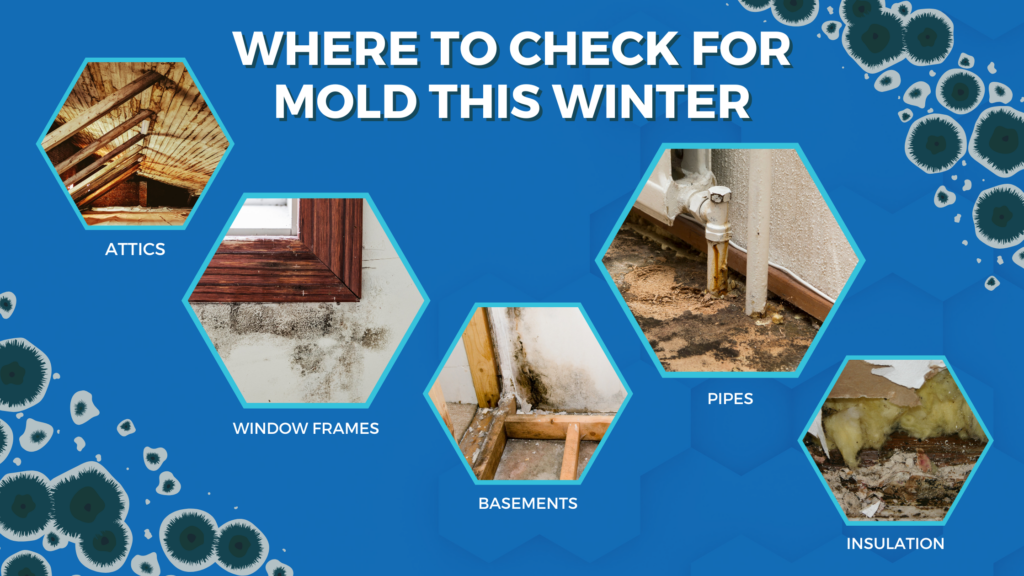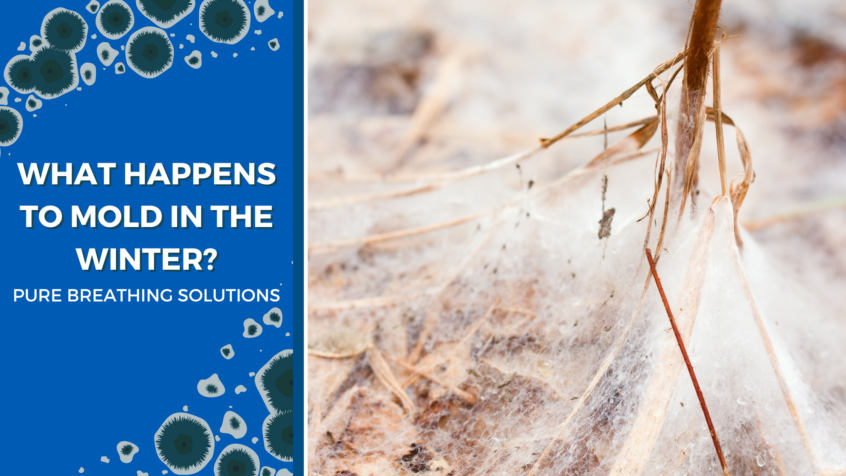Mold is a common irritant that can aggravate allergies and asthma. Many people liken mold to pollen, believing it’s only a concern during the warmer seasons. Do cold temperatures really make mold disappear? Or does the risk of mold persist during the winter?
The experts at Pure Breathing have everything you need to know about mold in winter to keep you and your family safe.
Mold in Winter
Unfortunately, mold doesn’t just die or disappear in winter—it’s actually present during all seasons. Moisture and warmth are two of the most important requirements for mold growth. While it’s easy to think of winter as a cold, dry time, indoor heating and melting snow mean there’s no shortage of warmth and moisture.
A common place to find mold in winter is on windowsills or window frames. While the inside of the house is usually warm in the winter, windowpanes are cold from the outside air. This difference in temperature often leads to condensation forming on the window. That moisture, combined with the warm indoor environment, makes an excellent breeding ground for mold.
Aside from windows, it’s important to watch out for mold in the basement, inside walls, around pipes, and in the attic. Mold in winter is likely to grow in any of these areas of the home that have high levels of humidity or condensation. As an example, indoor heating produces warm air that tends to rise. In the attic, it comes into contact with the house’s cold roof, leading to condensation and moisture that invites mold growth.

Tips for Dealing with Winter Mold
Mold in winter can definitely be an issue, but that doesn’t mean you have to settle for dealing with mold in cold temperatures. There are several ways to stay proactive and protect your family’s health.
Lower Humidity Levels
Reduce the risk of mold growth by maintaining low humidity levels in your home during the winter months. Indoor heating can lead to dry air, and many people try to counteract this by using humidifiers. However, it’s a better idea to set up dehumidifiers to keep the air from becoming too moist and aim to keep the humidity level around 50% during winter months. If you do use a humidifier, use the lowest setting.
Keep an Eye on Leaks
Winter comes with a lot of snow and ice that eventually melts. If there are any leaks in your home, the moisture created by melting snow can easily end up in your house, encouraging mold growth. Regularly check your pipes, gutters, basement, and roof for leaks during the winter so you can quickly repair them before water damage and mold become a problem.
Maintain Air Circulation
In general, maintaining air circulation is a good idea. Proper air circulation helps blend temperatures and humidity levels in the air, keeps surfaces dry—like entryways with melted snow—and prevents stagnant pockets of air in the home.
Get Expert Help from Pure Breathing
At the end of the day, there’s only so much you can do to prevent winter mold. If you discover mold in your home, reach out for professional help. Mold can have a wide range of negative health effects, so getting rid of it as soon as possible is vital to the health of you and your family.
Pure Breathing has been providing premium mold inspection and remediation services to Minnesota families for years. To find out more about how we can help, contact us today.
